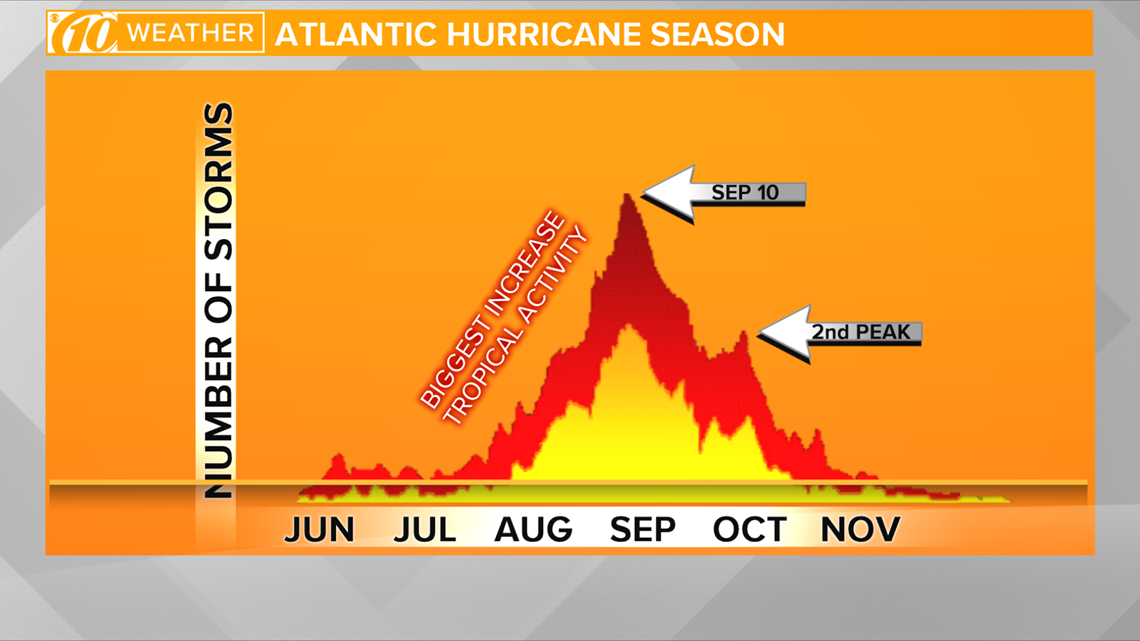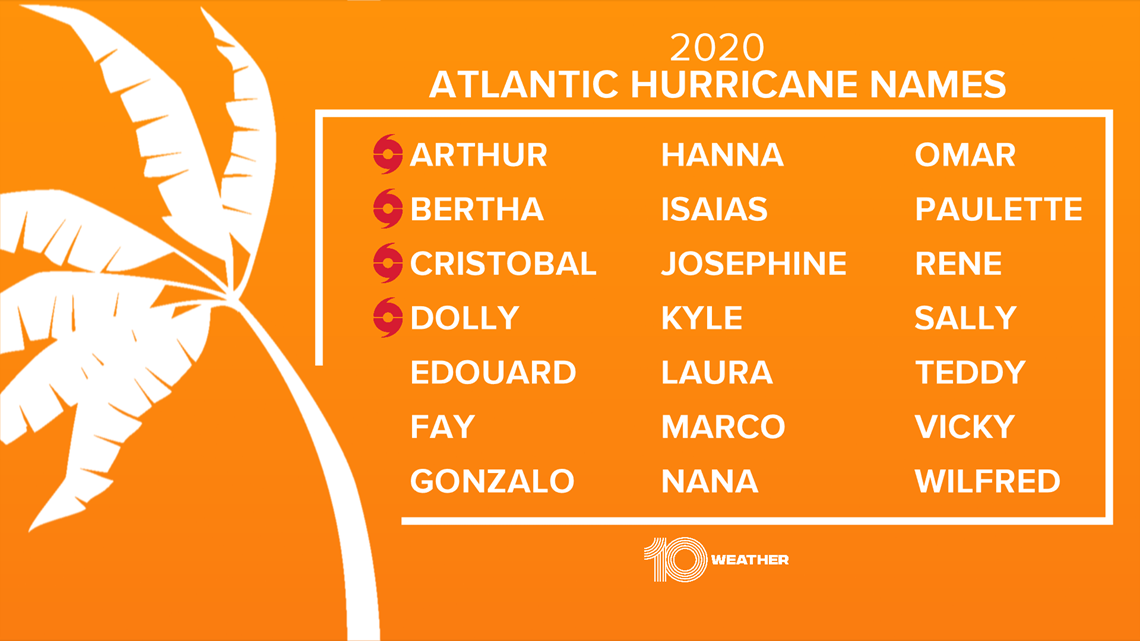ST. PETERSBURG, Fla. — There were no hurricanes making U.S. landfall in June. In fact, there were no hurricanes at all.
However, we’ve already had four tropical storms and they all set various records.
We had two tropical storms develop in May, with Arthur and Bertha on May 16 and 27, respectively, marking the sixth consecutive year with pre-season systems. Tropical storms Cristobal and Dolly formed on June 1 and June 22, respectively.
Notable 2020 hurricane season events through June:
- The first time since 2016 that two or more named storms developed before the start of the season.
- The first time since 2012 that two or more named storms formed in the month of May.
- The first season in the satellite era to have three systems form before or on June 1.
- The earliest third named storm on record, upon the naming of Tropical Storm Cristobal on June 1. The previous record was held by 2016's Tropical Storm Colin, which formed on June 5.
- Tropical Storm Dolly was named on June 22, becoming the third earliest fourth named storm on record, behind 2012's Tropical Storm Debby and 2016's Tropical Storm Danielle.
It’s actually not uncommon to see a very quiet June in the hurricane season. June, July and November see the least amount of hurricanes of any other month in hurricane season, which is June 1 through November 30. In fact, June is typically so quiet that a U.S. hurricane landfall hasn’t happened since 1986.
September is the most common month for hurricanes in the United States and is also the month when hurricanes have done the most damage. August was the second most common month, followed by October.


Why does it get so active in September? By August and September, ocean temperatures have warmed and can provide the energy input needed for hurricane formation. At the same time, air-circulation conditions in the atmosphere are favorable for producing the large-scale spin needed for a hurricane to occur.
Remember, 2020 is expected to be an above-average hurricane season. NOAA’s official forecast calls for a 60 percent chance of an above-normal season with 13–19 named storms, 6–10 hurricanes, 3–6 major hurricanes and an ACE index between 110 percent and 190 percent of the median. Above-average water temperatures and the lack of an El Niño are factors that would increase activity.
The next named storm will be Edouard. Here’s the entire 2020 hurricane name list for the Atlantic:


RELATED: What is a tropical disturbance?
- New coronavirus numbers: Florida adds another 6,093 new cases
- What new Florida laws go into effect on July 1
- Florida woman in viral video charged with battery after reportedly coughing on cancer patient at store
- City of Sarasota passes face mask mandate for indoor and outdoor public spaces
- These Florida beaches are closed July 4th weekend
- Pinellas County beaches will be open for July 4th weekend
- Zip codes with the most coronavirus cases
- Coronavirus in Florida: Hospitalizations, deaths, new cases
►Stay In the Know! Sign up now for the Brightside Blend Newsletter



